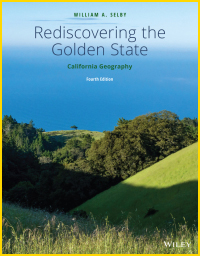
San Jose is about 50 miles from San Francisco and sits in an inland location at the foot of the Bay Area. This fact of its geography is duly reflected in its climate. Overall, San Jose has a larger annual and diurnal range of temperatures than does San Francisco. The Santa Cruz Mountains to the west of the city are a more significant barrier to oceanic influences than the hills of the peninsula. As a result the cool, moist fogs that are so common in summer in San Francisco or Oakland are noticeably absent here. The surrounding mountains also wring out a few extra inches of precipitation, making San Jose drier than the cities of the North Bay Area.
The San Francisco Bay does, however, provide a moderate maritime influence in San Jose. Summers are not nearly as hot here as they are a few miles farther south in the Santa Clara Valley. Likewise, winters temps are mitigated by the relatively warm waters of the bay. Freezing temperatures can and do occur in San Jose but they are infrequent. Truly cold snaps are extremely rare.
- Köppen Classification: (Csb) Mediterranean/cool summer.
- Current Conditions available via the National Weather Service.
- Climate data from The Western Regional Climate Center.
Rob O’Keefe


